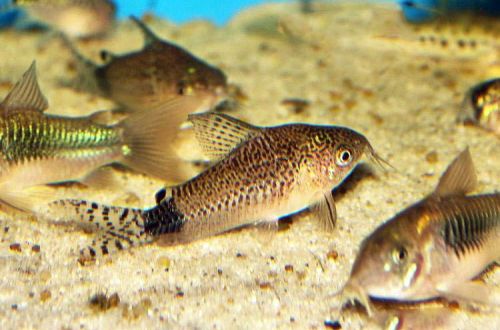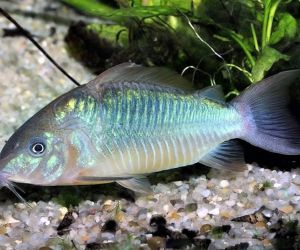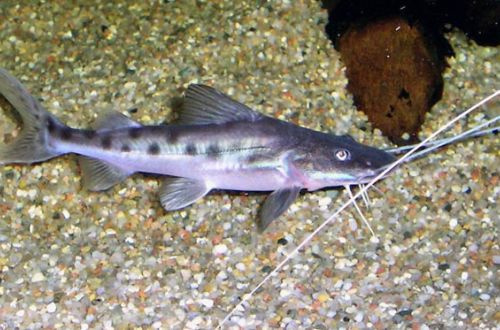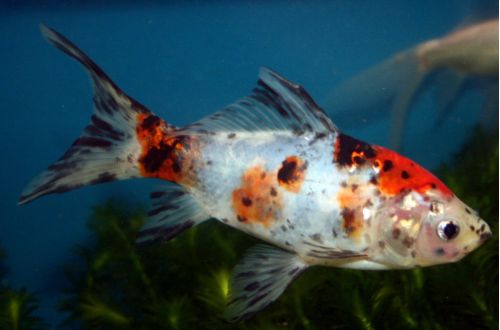
Guapore Corridor
Corydoras Guapore, the scientific name Corydoras guapore, belongs to the family (Shell or Callicht Catfish). Catfish is named after the area in which it was discovered – the basin of the Guapore River of the same name, which is naturally the border between the Brazilian state of Rondonia and the northeastern provinces of Bolivia (South America). Inhabits small rivers and streams, rarely found in the main channel. In its natural habitat, the water has a rich brown hue due to the high concentration of dissolved tannins released as a result of the decomposition of plant organic matter.

Contents
Description
This catfish is sometimes confused with some other similar species, such as Corydoras spotted-tailed. Both species have a spotted body pattern consisting of small dark specks, and a large black spot at the base of the tail. However, this is where the similarity ends. Corydoras Guapore led a slightly different way of life, which affected its morphology. The fish, unlike most other catfish, spends much of its time in the water column, and not at the bottom. Its body has become more symmetrical, and its tail is forked, which facilitates swimming. The eyes are larger, helping to search for food in muddy water, and the antennae at the mouth, on the contrary, have decreased.
Brief information:
- The volume of the aquarium – from 80 liters.
- Temperature – 22-28°C
- Value pH — 5.0–7.0
- Water hardness – soft to medium hard (2-12 dGH)
- Substrate type – sand or gravel
- Lighting – moderate or bright
- Brackish water – no
- Water movement – light or moderate
- The size of the fish is 4–5 cm.
- Food – any food
- Temperament – peaceful
- Keeping in a group of 4-6 fish
Maintenance and care
The optimal size of the aquarium for keeping a group of 4-6 catfish starts from 80 liters. The design must provide for free areas of open water for swimming, so the aquarium should not be allowed to grow over and / or use an excessive amount of tall decorative elements. At the same time, the presence of places for shelter is welcomed; natural snags can act as the latter. The use of the latter together with the leaves of some trees has a positive effect on the chemical composition of the water, making it similar to that in which fish live in nature. Driftwood and leaves are a source of tannins that help soften water and stain it in a characteristic brown color. Read more in the article “Which tree leaves can be used in an aquarium.”
Successful long-term maintenance depends on providing a stable aquatic environment within an acceptable range of temperatures and hydrochemical values. It is impossible to allow the accumulation of organic waste (food leftovers, excrement) and regularly maintain the aquarium: weekly replace part of the water with fresh water, clean the soil, glass and decorative elements, and carry out preventive maintenance of installed equipment.
Food. The best choice is a varied diet consisting of dry, frozen or live foods. It is advisable to use products floating on the surface, or nutritional tablets and gels attached to decorative elements, glass.
behavior and compatibility. A peaceful friendly fish that can get along with many non-aggressive species of comparable size. There are usually no compatibility issues.





